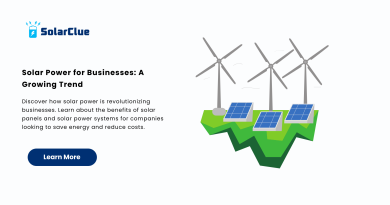How Are Solar Panels Made?
Solar panels are a key component of the renewable energy landscape, offering a sustainable alternative to fossil fuels. Understanding the manufacturing process of solar panels provides insight into how raw materials are transformed into efficient energy producers. This blog will cover the journey from silicon extraction to finished solar modules, different types of solar cells, and the environmental impact of solar panel production.
Table of Contents
The Manufacturing Process of Solar Panels
1. Silicon Extraction
Silicon, the primary material used in most solar panels, is derived from quartz sand.
a. Mining: The process begins with the mining of quartz sand from quarries.
b. Purification: The quartz sand undergoes a purification process to remove impurities, resulting in metallurgical-grade silicon. This silicon is then further refined to produce solar-grade silicon with higher purity levels.
2. Wafer Production
The purified silicon is transformed into wafers, the building blocks of solar cells.
a. Ingot Formation: The purified silicon is melted and formed into cylindrical ingots using the Czochralski process (for monocrystalline silicon) or cast into blocks (for polycrystalline silicon).
b. Slicing: These ingots or blocks are then sliced into thin wafers using wire saws. Monocrystalline wafers are uniform in structure, while polycrystalline wafers have a multi-crystal structure.
3. Cell Fabrication
The silicon wafers are processed to create solar cells.
a. Doping: The wafers are treated with phosphorous or boron to create a positive-negative (p-n) junction, essential for generating an electric field.
b. Anti-Reflective Coating: An anti-reflective coating is applied to increase the amount of light absorbed by the cells.
c. Metal Contacts: Fine lines of silver or aluminum are printed onto the wafer’s surface to create the electrical contacts.
4. Module Assembly
Individual solar cells are assembled into a solar panel module.
a. Stringing and Tabbing: Solar cells are interconnected using metal ribbons to form strings.
b. Encapsulation: The strings of cells are sandwiched between layers of ethylene-vinyl acetate (EVA) and a protective backsheet.
c. Lamination: This assembly is then laminated to bond the layers together and provide structural integrity.
d. Framing: The laminated module is fitted with an aluminum frame to protect the edges and facilitate mounting.
e. Junction Box: A junction box is attached to the back of the module to house electrical connections and provide a connection point for external wiring.
5. Quality Control
Rigorous testing ensures the reliability and performance of solar panels.
a. Visual Inspection: Panels are inspected for any visible defects.
b. Electroluminescence Testing: This test detects microcracks and other hidden defects in the cells.
c. Performance Testing: Panels are tested under simulated sunlight to measure their electrical output and efficiency.
d. Durability Testing: Panels undergo environmental testing to ensure they can withstand extreme conditions such as high temperatures, humidity, and mechanical stress.
Types of Solar Cells and Their Manufacturing Processes
| Type of Solar Cell | Description | Manufacturing Process |
|---|---|---|
| Monocrystalline | Made from single-crystal silicon, high efficiency. | Czochralski process for ingot formation, sliced into wafers. |
| Polycrystalline | Made from multiple silicon crystals, cost-effective. | Silicon cast into blocks, sliced into wafers. |
| Thin-Film | Made from materials like cadmium telluride or amorphous silicon, flexible and lightweight. | Deposition of thin layers of photovoltaic material onto a substrate. |
Environmental Impact and Sustainability
While solar panels offer a clean energy source, their production has environmental impacts.
a. Energy Consumption: Manufacturing solar panels requires significant energy, particularly in the purification and wafer production stages.
b. Waste Generation: The production process generates waste materials, including silicon tetrachloride and other chemicals.
c. Resource Use: The mining of raw materials and the use of hazardous chemicals in manufacturing pose environmental risks.
Industry efforts towards sustainability include:
a. Recycling Programs: Developing processes to recycle end-of-life solar panels and manufacturing waste.
b. Green Manufacturing: Using renewable energy sources in manufacturing facilities and improving energy efficiency.
c. Reducing Toxic Materials: Researching alternative materials and manufacturing methods that minimize environmental impact.
Conclusion
The manufacturing process of solar panels is a complex journey from raw materials to finished modules, involving several critical steps. Understanding this process highlights the technological innovation and industrial effort behind solar energy. As the industry continues to strive for sustainability, advancements in manufacturing and recycling will further enhance the environmental benefits of solar power.
Here at SolarClue®, we offer a smart, practical, and “beautiful” solution. You will be answered for all the questions related to Solar.
We provide all kinds of brands that are the Best Solar panels in India.
If you are the one who is planning for the solar power system. Don’t hesitate to contact our team!
Looking forward to empowering you with solar energy, just like hundreds of our other clients!
FAQs
1. What is the most efficient type of solar cell?
Monocrystalline solar cells are generally the most efficient, offering higher performance than polycrystalline and thin-film cells.
2. How long does the manufacturing process take?
The entire process, from silicon extraction to finished module, can take several weeks, depending on the production scale and facility efficiency.
3. Can solar panels be recycled?
Yes, solar panels can be recycled. Efforts are underway to develop efficient recycling processes for silicon, glass, and metal components.
4. What is the environmental impact of thin-film solar cells?
Thin-film solar cells have a lower material usage but may involve hazardous substances like cadmium, requiring careful handling and disposal.
5. Are there any sustainable alternatives to silicon-based solar panels?
Research is ongoing into alternative materials, such as perovskite solar cells, which promise lower production costs and reduced environmental impact.




